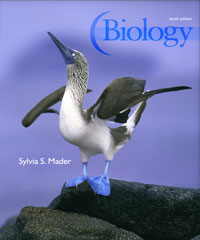1 A) In most primates, the eyes are at the front of the head. B) Cone cells are active in dim light, but the image is blurry and gray. C) Binocular vision hinders primates' ability to accurately judge the distance and position of things. D) None of these 2 A) Five digits B) Opposable thumbs C) Sensitive pads on the underside of the fingers D) Flat nails 3 A) ocean B) desert C) arctic D) trees 4 A) opposable thumb B) nails instead of claws C) expanded forebrain D) All of these 5 A) Australopithecus afarensis B) Homo erectus C) Homo sapiens D) Australopithecus robustus 6 A) forward protruding nose, jaws and teeth B) massive brow ridges C) low and sloping forehead D) All of these 7 A) habilis B) Cro-Magnon C) A. afarensis D) erectus 8 A) Cro-Magnons B) erectus C) africanus D) Neanderthals 9 A) There is no evidence that they were culturally advanced. B) They made stone points and attached them to wooden handles for throwing at prey. C) They were heavily muscled, especially in the shoulders and neck. D) All of these 10 A) Cro-Magnon B) boisei C) erectus D) sapiens 11 A) H. habilis B) H. sapiens C) A. Afarensis D) None of these 12 Homo sapiens are the _____.A) Neanderthals B) Cro-Magnon C) A. afarensis 13 A) Australopithecus afarensis B) Australopithecus boisei C) P. aethiopecus D) None of these 14 A) the climate was becoming warmer and more humid B) grasslands were expanding C) large forests provided food and shelter D) All of these 15 A) a straight spine B) long, narrow pelvis C) long arms D) None of these 16 A) curvature of the spine B) the length of limb bones C) jaw shape D) All of these 17 A) chimpanzees B) orangutans C) gorillas D) gibbons 18 A) New-World monkeys B) Old-World monkeys C) the hominoids D) All of these 19 A) have long prehensile tails B) have flat noses C) evolved in Africa D) All of these 20 A) increases the possibility of the human to have skin cancer B) reduces vitamin D absorption even when UV intensity is low C) Allows for vitamin D absorption even when UV intensity is low D) None of these





